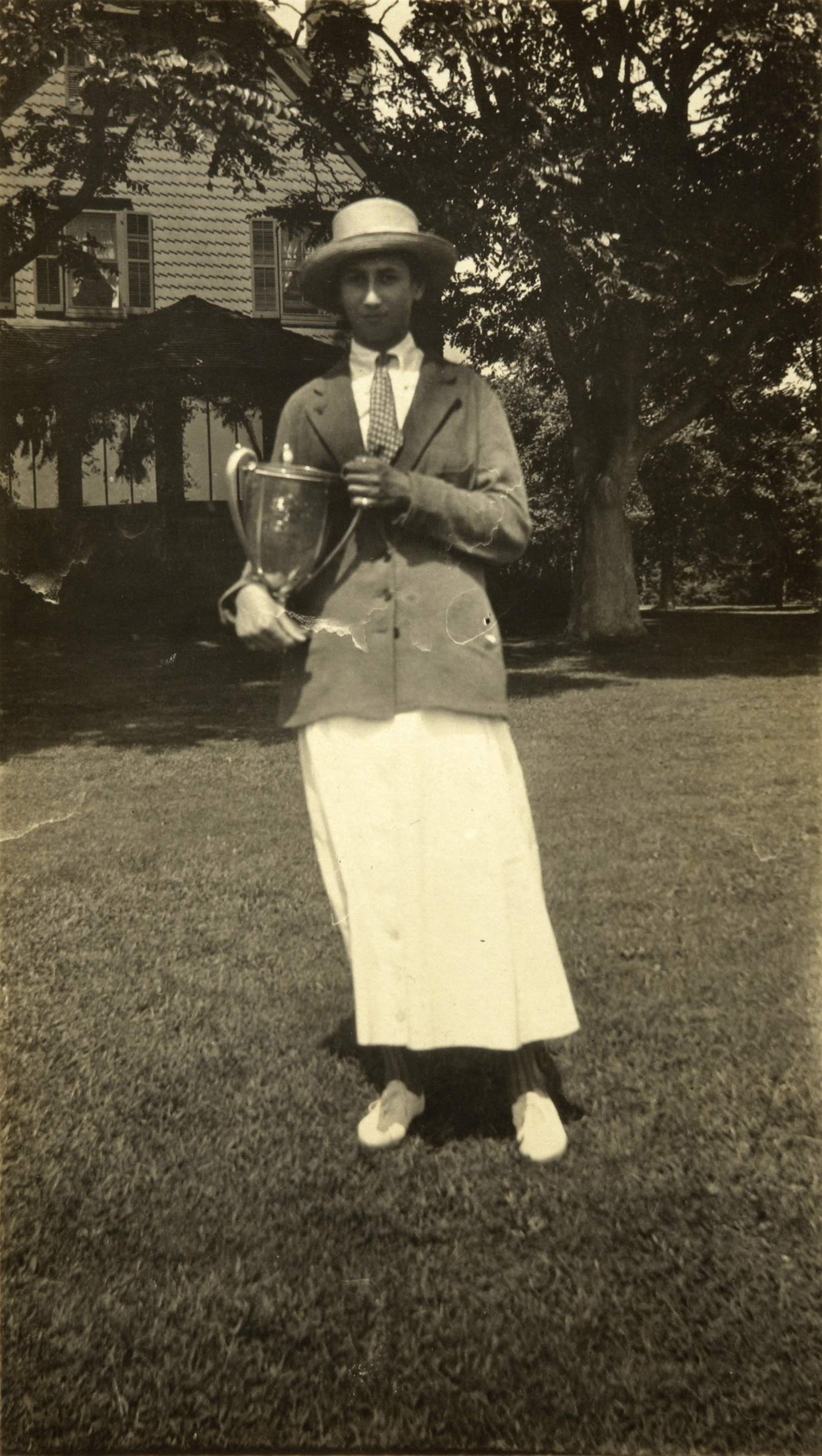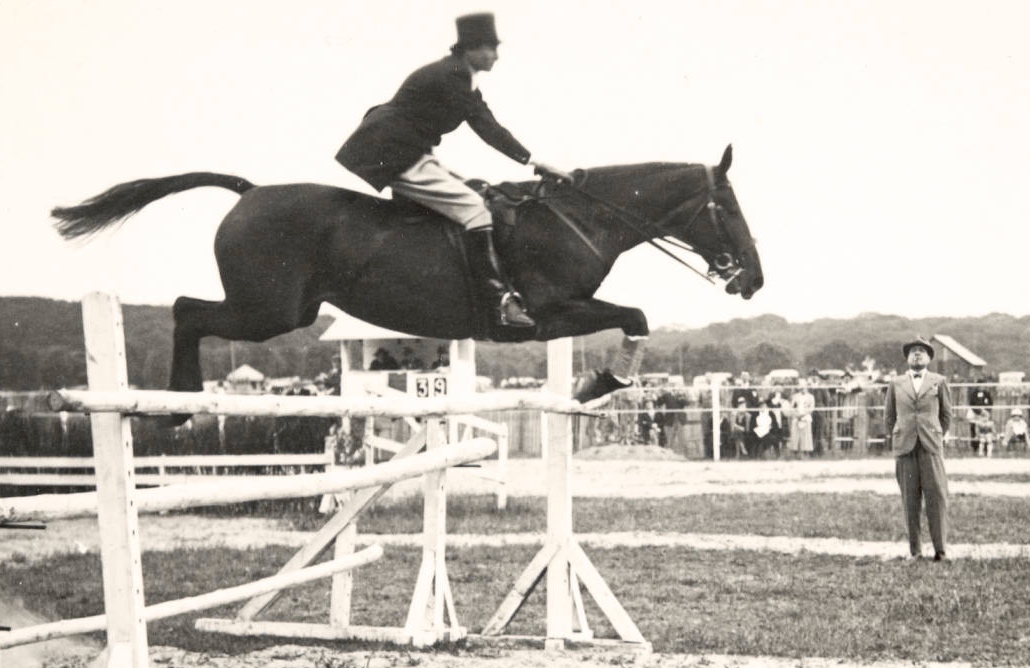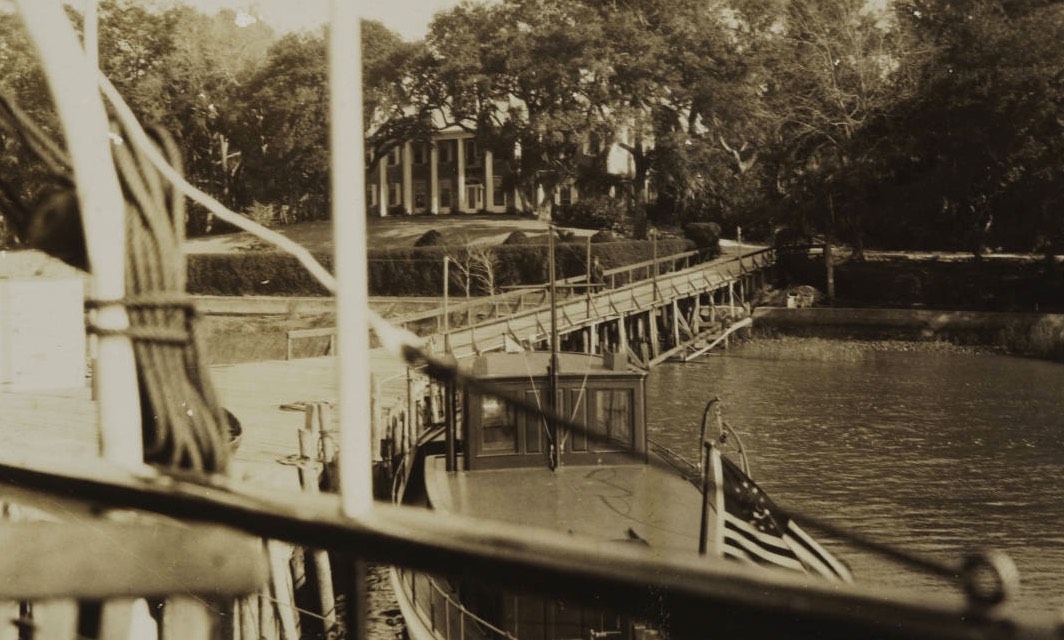In addition to being a talented horsewoman, Belle Baruch was an expert hunter and sailor. At thirteen she shot her first deer and the New York Herald called her “the young Diana.” By the age of seventeen she had won over fifty sailing trophies and had become the first female to be awarded the “Queen of the Bay” sailing prize in Great South Bay, Long Island.

During her twenties and thirties she excelled in show-jumping in Europe, competing against men with a French gentleman’s license because the U.S. would not grant a license to a woman. She placed first at the Paris Horse Show in 1931 - out of 119 riders she was the only one with a perfect score. The next year she won the Premio Primavera Florentine, setting a woman’s amateur high-jump record.

The Caines family traces their settlement at Hobcaw to the eighteenth century, and when Baruch bought the property, five Caines brothers were living there with their families. They were Joseph Jenkins (Hucks), Richard Randolph (Sawney), Edmund Alston (Ball), Robert James Donaldson (Bob), and Moultrie Johnson (Pluty). They lived at Clambank, and in a settlement on the south side of plantation facing Pumpkin Seed Island. During the Baruch era, hunters coveted the decoys carved by the Caines brothers. Now they are collectors’ items, some of which have sold for over $100,000.
The two paintings on this wall are by the French-born American artist Louis Aston Knight, who spent time at Hobcaw Barony in 1916 and again in 1936, commissioned by the Baruchs to paint landscapes and structures on the property. This painting, from 1916, depicts two modest homes that once stood at Clambank Landing. Sitting on one of the porches is a figure thought to be Sawney Caines, carving duck decoys while his wife washes clothes in the yard.

It has been said that during Woodrow Wilson’s administration, when Bernard Baruch was head of the War Industries Board, he was considered the most powerful man in the country next to the President. Naturally, Baruch felt the need for a retreat from the high-pressure world of finance and public affairs, and Hobcaw Barony fulfilled that requirement. To maintain the peace and quiet he craved, he adamantly refused to install a telephone at Hobcaw House.
Most of the family’s correspondence came through the mail, carried twice daily from Georgetown in this mailbag on the Baruchs’ yacht, the Sea Dog, pictured below, until a bridge was built across Winyah Bay in 1937. When members of the family or guests needed to make a phone call they had to visit a pay phone in Georgetown. Local residents recalled that bystanders tried to eavesdrop when Baruch used the phone, hoping to pick up some stock market tips. The only time Baruch permitted the installation of a telephone at Hobcaw was during FDR’s visit in 1944.

This bedroom, known as the “Guest Room” in the architectural plan for Hobcaw House, was redecorated in 2009 by Pawleys Island interior designer Rebecca Ceron-Martin. The renovation of the room took over a year and involved removing layers of wallpaper, repairing plaster, replacing rotten window sills and refurbishing the hardwood floors.
According to Ms. Ceron-Martin, the new design combines the Baruchs’ “sophisticated ‘lowcountry-sportsman’ style of elegance” with a feminine perspective, creating a marked contrast with the “Son’s Room,” located across the hall. She used original furnishings and “period-accurate reproduction textiles of the finest quality and design standards,” with a theme based on songbirds of the Carolinas. The pattern of the drapery and coverlet fabric reflects Annie Baruch’s Scottish heritage and the Baruchs’ love of the Scottish Highlands, where they vacationed and hunted.

Belle Baruch turned twenty-one in 1920, and her father gave her a million dollars, as he did each of his children when they came of age. High-spirited and very rich – her million would be worth about ten times that today – Belle lived the good life. She established a pied-a-terre in Paris and spent much of the year in France.
It was in France that Belle became interested in equestrian competition. She had ridden horses all her life, but when she met the trainer Paul Larregain in 1927 she began to take show riding seriously. Belle trained with Larregain for a year and, with his assistance, bought the renowned Anglo-Arabian, Souriant III, a chestnut stallion who would become her favorite mount.
Denied a license to compete by the American Embassy – they were only issued to the U.S. Cavalry teams – she rode with a French gentleman rider’s license and won first-place six times in her first year. Young and adventurous, Belle Baruch was enjoying the life of a privileged scion of the leisure class.